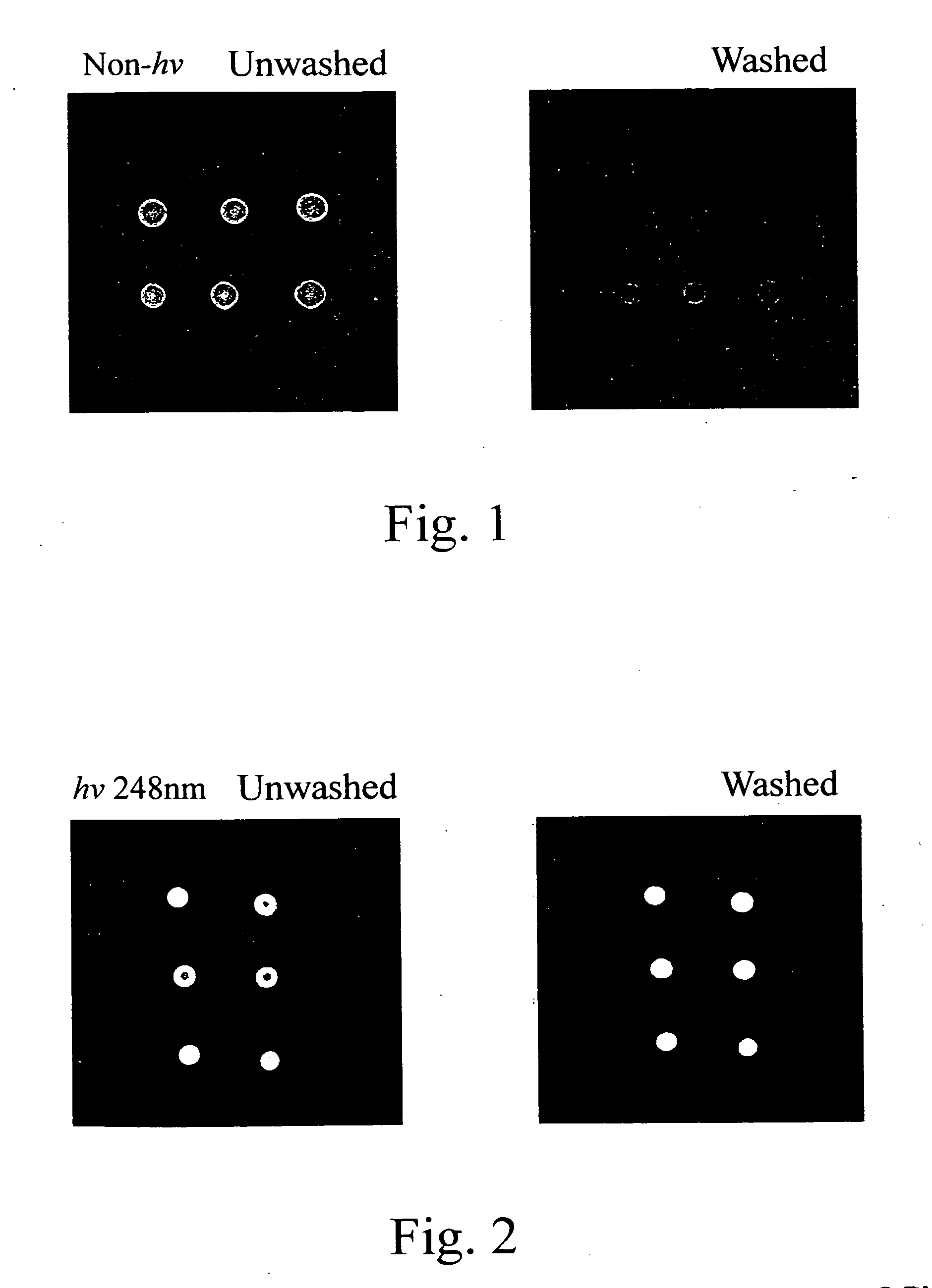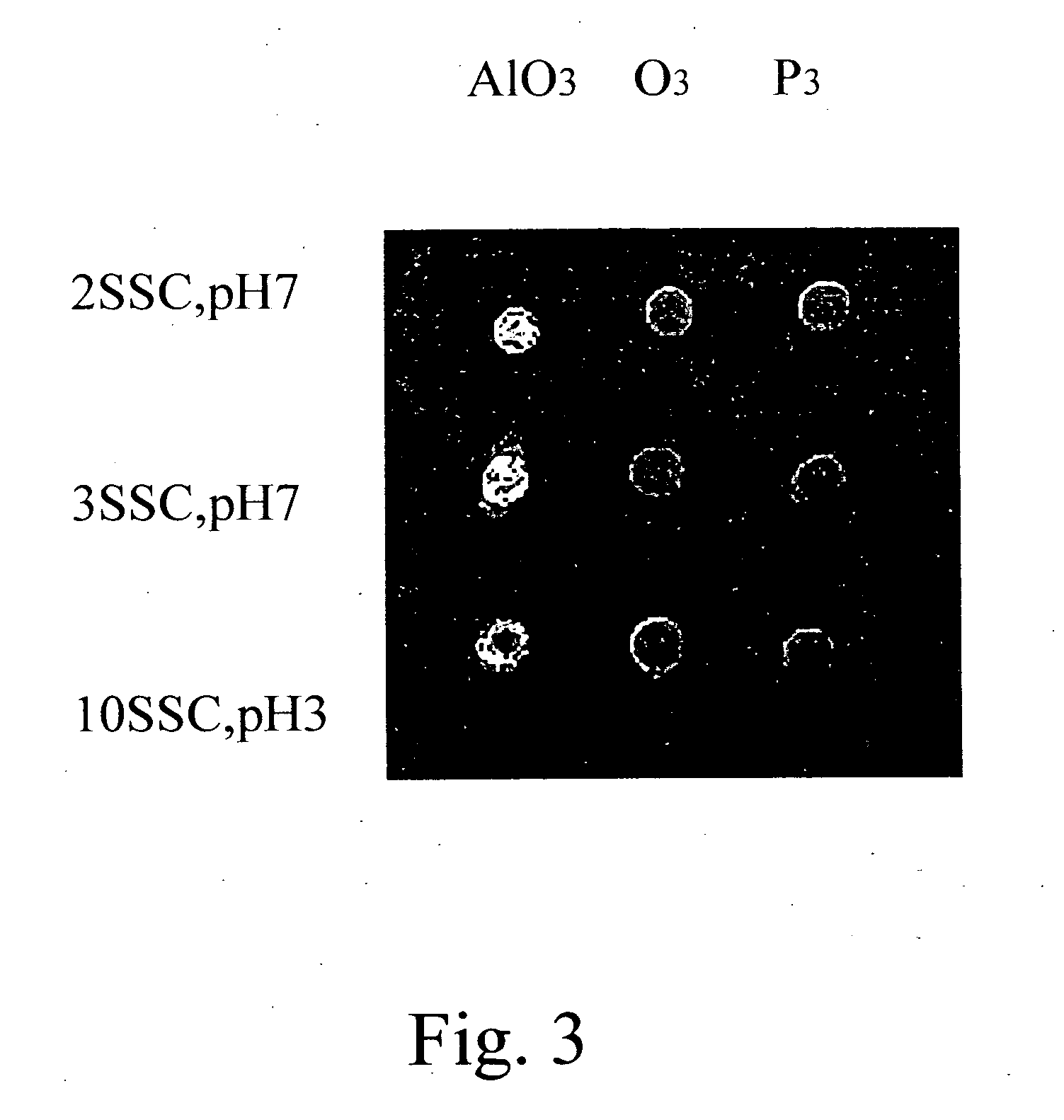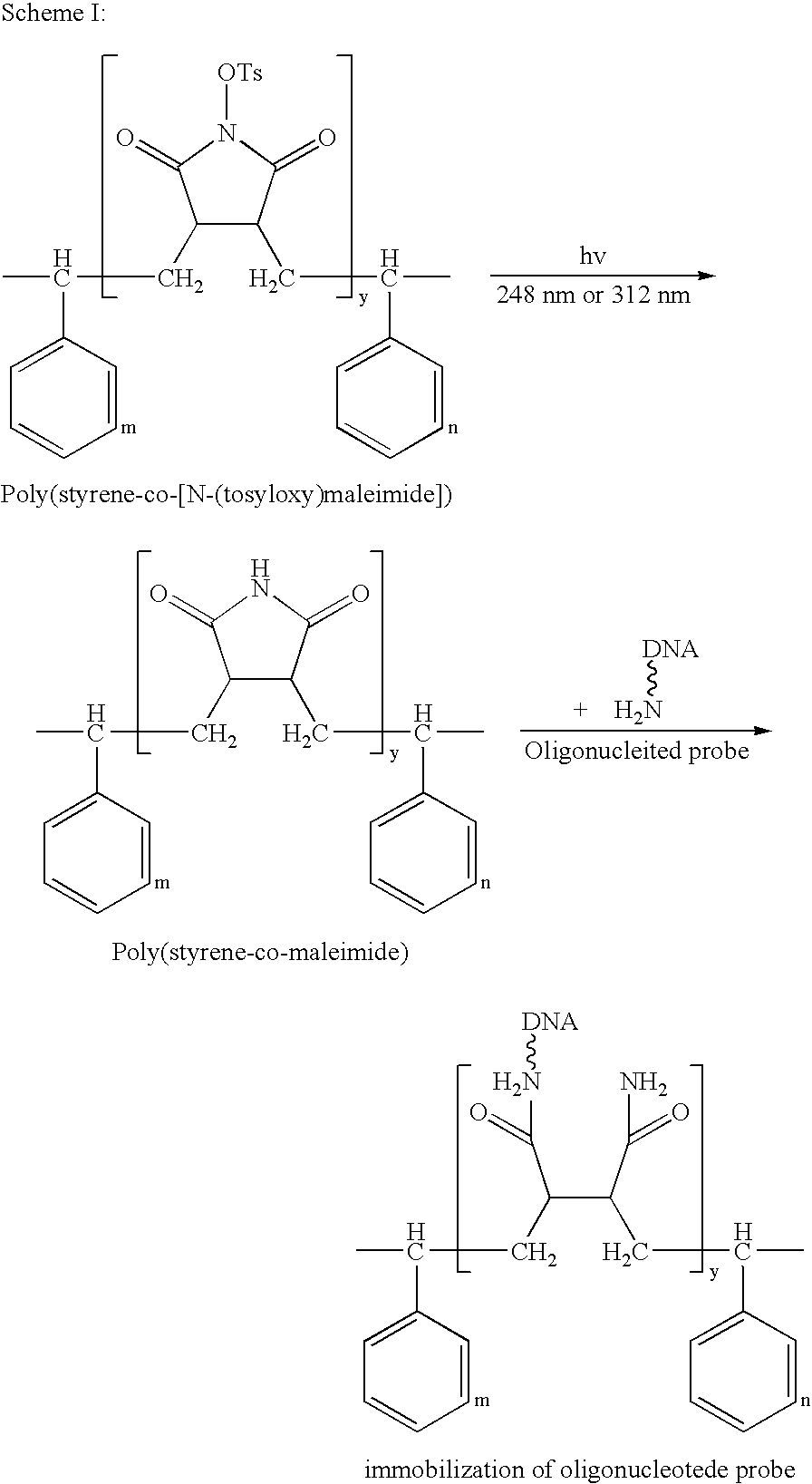On-spot selectively activated hydrophobic slide and preparation thereof
a hydrophobic slide and selective activation technology, applied in the field of on-spot selective activation of hydrophobic slide/microarray, can solve the problems of low reaction efficiency, poor homogeneity, long reaction time, etc., and achieve the effect of high-efficiency manufacturing of high-density microarrays
- Summary
- Abstract
- Description
- Claims
- Application Information
AI Technical Summary
Benefits of technology
Problems solved by technology
Method used
Image
Examples
example 1
Preparation of TsOMI
[0037] 0.25 g N-hydroxymaleimide and 0.5 g TsCl are mixed in 50 ml toluene / IPA solution. The reaction mixture was heated to 60° C. and allowed to react in the presence of N2 for 3 hours to give TsOMI solution.
example 2
Preparation of poly(styrene-co-[N-(tosyloxy)maleimide])
[0038] The procedure for preparing poly(styrene-co-[N-(tosyloxy)maleimide]) is shown in Scheme II:
[0039] To a pre-filled nitrogen or argon reaction bottle containing toluene, polystyrene and TsOMI were added in a molar ratio of 4:1, followed by addition of 0.5% N,N′-azobisisobutyronitrile (AIBN) dropwise. The co-polymerization was conducted at 60° C. for 2 hours, and then ceased by aeration to obtain poly(styrene-co-[N-(tosyloxy)maleimide]) in toluene.
example 3
Effectiveness of oligonucleotide immobilization of poly(styrene-co-[N-(tosyloxy)maleimide])
[0040] Poly(styrene-co-[N-(tosyloxy)maleimide]) synthesized from Example 2 was dissolved in toluene and then coated on glass slides at 4,000 rpm to form poly(styrene-co-[N-(tosyloxy)maleimide]) slides. The slides were dried in an oven at 100° C. to remove toluene. A synthetic oligonucleotide probe in which the 5′ end was labeled with fluorescence and the 3′ end bore amine group, was immobilized to the aforementioned slides to perform a ring-opening reaction. The immobilization conditions were described as follows: 0.5 μM of the probe in 2×SSC buffer (pH 7.0) was spotted on the slides and incubated at 37° C. for 1 hour. The slides were washed with 0.2% SDS for 10 minutes. The fluorescence analyses were performed for the slides with and without washing (control) to monitor the immobilization efficiency. The result is shown in FIG. 1. It is shown that the amount of oligonucleotide probes immobil...
PUM
| Property | Measurement | Unit |
|---|---|---|
| Pressure | aaaaa | aaaaa |
| Hydrophobicity | aaaaa | aaaaa |
Abstract
Description
Claims
Application Information
 Login to View More
Login to View More - R&D
- Intellectual Property
- Life Sciences
- Materials
- Tech Scout
- Unparalleled Data Quality
- Higher Quality Content
- 60% Fewer Hallucinations
Browse by: Latest US Patents, China's latest patents, Technical Efficacy Thesaurus, Application Domain, Technology Topic, Popular Technical Reports.
© 2025 PatSnap. All rights reserved.Legal|Privacy policy|Modern Slavery Act Transparency Statement|Sitemap|About US| Contact US: help@patsnap.com



